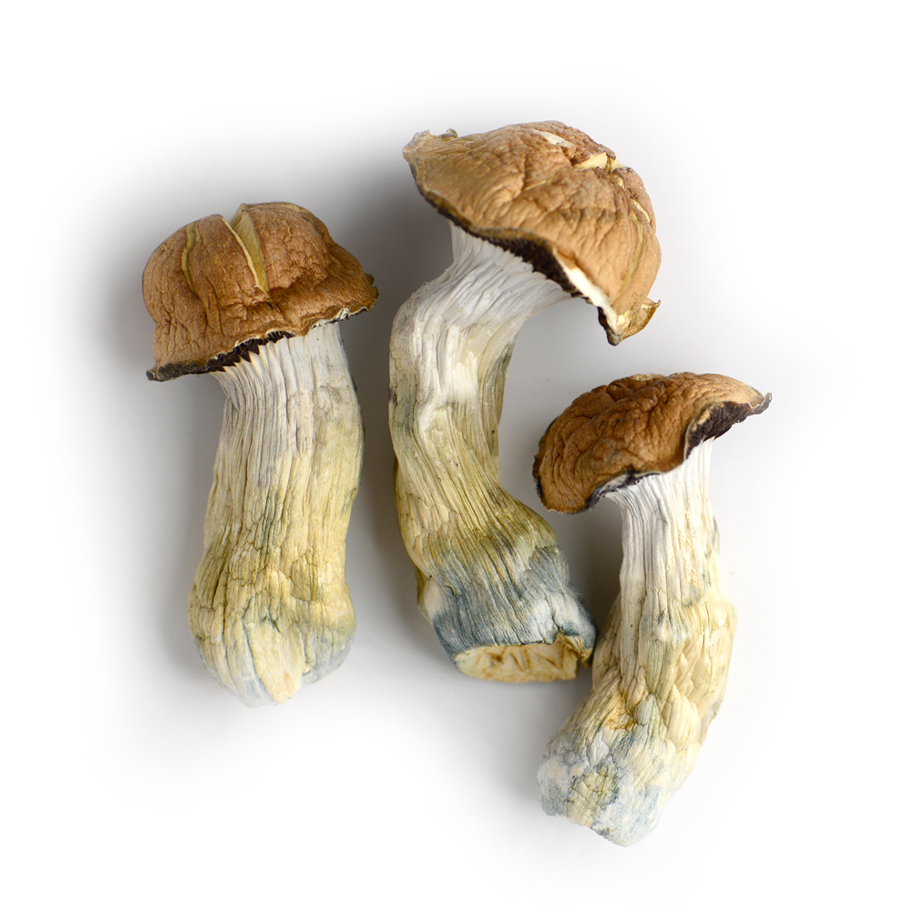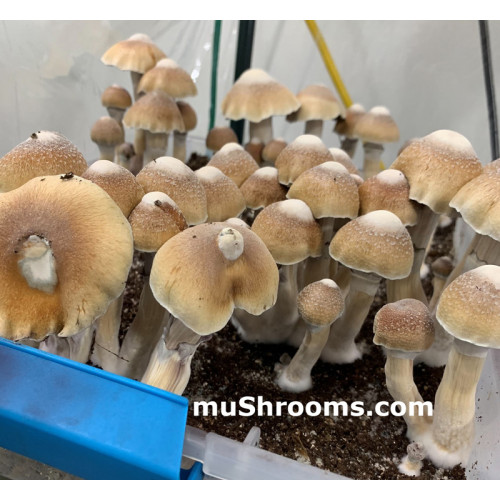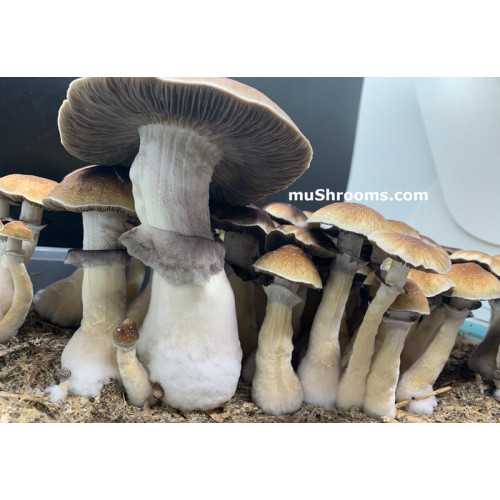So, you’ve probably heard of mushrooms, right? But have you ever heard of tidal wave mushrooms? If you’re anything like me, you might be wondering, “What the heck are tidal wave mushrooms?” Well, buckle up, because we’re about to dive deep into the mysterious world of these unique fungi. They’re not just your regular forest-floor mushrooms; these bad boys are something special, and trust me, they’re worth getting to know.
Tidal wave mushrooms have been making waves (pun intended) in the world of mycology. They’re not just a cool name; these fungi are changing the way we think about ecosystems, biodiversity, and even potential medicinal applications. So, whether you’re a mushroom enthusiast or just someone who’s curious about the wonders of nature, this is the article for you.
Now, let’s get one thing straight: tidal wave mushrooms aren’t actually found underwater. The name might throw you off, but it’s all about the way they grow and spread. They’re like a tidal wave of growth, spreading rapidly across forests and landscapes. Pretty cool, huh? Let’s dive into the details and explore what makes these fungi so special.
Read also:Exploring The Life And Achievements Of Samantha Lewes
What Are Tidal Wave Mushrooms?
Tidal wave mushrooms, scientifically known as Agrocybe praecox, are a species of fungi that belong to the family Tricholomataceae. These mushrooms are often found in North America and Europe, thriving in deciduous forests and grassy areas. They’re known for their rapid growth and ability to colonize large areas quickly, much like a tidal wave sweeping across the shore.
One of the most fascinating things about tidal wave mushrooms is their adaptability. They can grow in a variety of environments, from urban parks to dense forests. This adaptability makes them a crucial part of many ecosystems, contributing to nutrient cycling and soil health.
Key Characteristics of Tidal Wave Mushrooms
- Cap: The cap of a tidal wave mushroom is typically brown to gray, with a smooth or slightly scaly surface.
- Gills: The gills are white or cream-colored and closely spaced.
- Stem: The stem is slender and often hollow, with a fibrous texture.
- Spore Print: The spore print is white, which helps in identifying the species.
Where Do Tidal Wave Mushrooms Grow?
Alright, so now that we know what tidal wave mushrooms are, let’s talk about where they grow. These fungi are commonly found in deciduous forests, grassy areas, and even urban parks. They thrive in environments with plenty of organic matter, such as leaf litter and decaying wood. In fact, tidal wave mushrooms play a crucial role in breaking down this organic material, recycling nutrients back into the soil.
Interestingly, tidal wave mushrooms are also known to grow in disturbed areas, such as construction sites and roadsides. This ability to adapt to human-altered environments makes them incredibly resilient and versatile.
Factors Affecting Growth
- Temperature: Tidal wave mushrooms prefer cooler temperatures, typically growing in the spring and fall.
- Moisture: They require a moist environment to thrive, often appearing after heavy rains.
- Soil Type: These mushrooms grow best in nutrient-rich soils with plenty of organic matter.
Why Are Tidal Wave Mushrooms Important?
Okay, so we’ve covered what they are and where they grow, but why should we care about tidal wave mushrooms? Well, these fungi play a vital role in ecosystems around the world. They contribute to soil health by breaking down organic matter and recycling nutrients. This process helps support plant growth and biodiversity in forests and grasslands.
Additionally, tidal wave mushrooms have potential medicinal applications. Some studies suggest that these fungi contain compounds with antimicrobial and antioxidant properties. While more research is needed, the possibilities are exciting for both human and environmental health.
Read also:Lena Paul Pregnant Exploring The Journey Of Motherhood
Environmental Benefits
- Nutrient Cycling: Tidal wave mushrooms help break down organic matter, releasing nutrients back into the soil.
- Biodiversity Support: By improving soil health, these fungi support a wide range of plant and animal species.
- Climate Regulation: Fungi like tidal wave mushrooms play a role in carbon sequestration, helping to mitigate climate change.
How to Identify Tidal Wave Mushrooms
Now, let’s talk about how to identify tidal wave mushrooms in the wild. While they might look similar to other fungi, there are a few key characteristics to look out for. First, check the cap – it should be brown to gray with a smooth or slightly scaly surface. Next, examine the gills – they should be white or cream-colored and closely spaced. Finally, take a look at the stem – it should be slender and fibrous, often hollow.
Another helpful tip is to create a spore print. Simply place the cap of the mushroom gill-side down on a piece of paper and leave it for a few hours. If the spore print is white, you’re likely dealing with a tidal wave mushroom.
Common Misidentifications
- Agaricus Bisporus: This common mushroom can look similar to tidal wave mushrooms, but it has a different spore print color.
- Lepiota Naucina: Another look-alike, but it has a more pronounced scaly cap.
Harvesting Tidal Wave Mushrooms
If you’re interested in harvesting tidal wave mushrooms, there are a few things to keep in mind. First and foremost, make sure you’ve correctly identified the species. Misidentifying mushrooms can be dangerous, so it’s always a good idea to consult a guidebook or expert. Once you’re sure you’ve got the right species, gently remove the mushroom from the ground, taking care not to damage the mycelium beneath.
It’s also important to harvest sustainably. Only take what you need and leave some mushrooms behind to allow the population to continue thriving. By harvesting responsibly, you can help ensure that tidal wave mushrooms remain a part of our ecosystems for generations to come.
Storage and Preparation
- Storage: Tidal wave mushrooms should be stored in a paper bag or container to prevent moisture buildup.
- Preparation: These mushrooms can be sautéed, roasted, or added to soups and stews for a delicious earthy flavor.
Scientific Studies on Tidal Wave Mushrooms
So, what do the experts have to say about tidal wave mushrooms? Well, there’s been some fascinating research conducted on these fungi in recent years. Studies have shown that tidal wave mushrooms contain compounds with potential medicinal properties, including antimicrobial and antioxidant effects. While more research is needed, these findings are promising for both human health and environmental applications.
In addition to their potential medicinal uses, tidal wave mushrooms have been studied for their role in ecosystem health. Research has shown that these fungi contribute significantly to nutrient cycling and soil health, making them a crucial part of many ecosystems.
Key Findings
- Antimicrobial Properties: Compounds found in tidal wave mushrooms have shown promise in fighting bacterial infections.
- Antioxidant Effects: These fungi contain antioxidants that may help protect cells from damage.
Challenges Facing Tidal Wave Mushrooms
While tidal wave mushrooms are incredibly resilient, they do face some challenges in the wild. Habitat destruction, pollution, and climate change all pose threats to these fungi and the ecosystems they support. As humans continue to alter natural environments, it’s more important than ever to protect species like tidal wave mushrooms.
Conservation efforts are underway to preserve habitats and promote sustainable practices. By working together, we can help ensure that tidal wave mushrooms continue to thrive in the wild.
What You Can Do
- Support Conservation: Donate to organizations working to protect natural habitats.
- Practice Sustainability: Harvest mushrooms responsibly and reduce your environmental impact.
The Future of Tidal Wave Mushrooms
Looking ahead, the future of tidal wave mushrooms is both exciting and uncertain. With ongoing research and conservation efforts, there’s hope that these fungi will continue to play a vital role in ecosystems around the world. However, challenges like climate change and habitat destruction mean that we need to remain vigilant in protecting these incredible organisms.
As we learn more about tidal wave mushrooms, their potential applications in medicine and environmental science become clearer. The possibilities are endless, and the more we understand these fungi, the better equipped we’ll be to harness their power for the benefit of both humans and the planet.
Potential Applications
- Medicine: Antimicrobial and antioxidant compounds could lead to new treatments.
- Environmental Science: Tidal wave mushrooms could play a role in carbon sequestration and soil health improvement.
Conclusion
So, there you have it – the fascinating world of tidal wave mushrooms. From their rapid growth and adaptability to their potential medicinal applications, these fungi are truly remarkable. They play a vital role in ecosystems around the world, contributing to soil health, biodiversity, and even climate regulation.
If you’re interested in learning more about tidal wave mushrooms, there’s no better time to start. Whether you’re a mushroom enthusiast, a nature lover, or just someone who’s curious about the wonders of the natural world, these fungi are definitely worth exploring. And hey, who knows? You might just discover something amazing along the way.
So, what are you waiting for? Get out there and start exploring the world of tidal wave mushrooms. And don’t forget to share your findings with the world – the more we know about these incredible organisms, the better equipped we’ll be to protect them and the ecosystems they support.
Table of Contents:
- What Are Tidal Wave Mushrooms?
- Where Do Tidal Wave Mushrooms Grow?
- Why Are Tidal Wave Mushrooms Important?
- How to Identify Tidal Wave Mushrooms
- Harvesting Tidal Wave Mushrooms
- Scientific Studies on Tidal Wave Mushrooms
- Challenges Facing Tidal Wave Mushrooms
- The Future of Tidal Wave Mushrooms
- Conclusion


